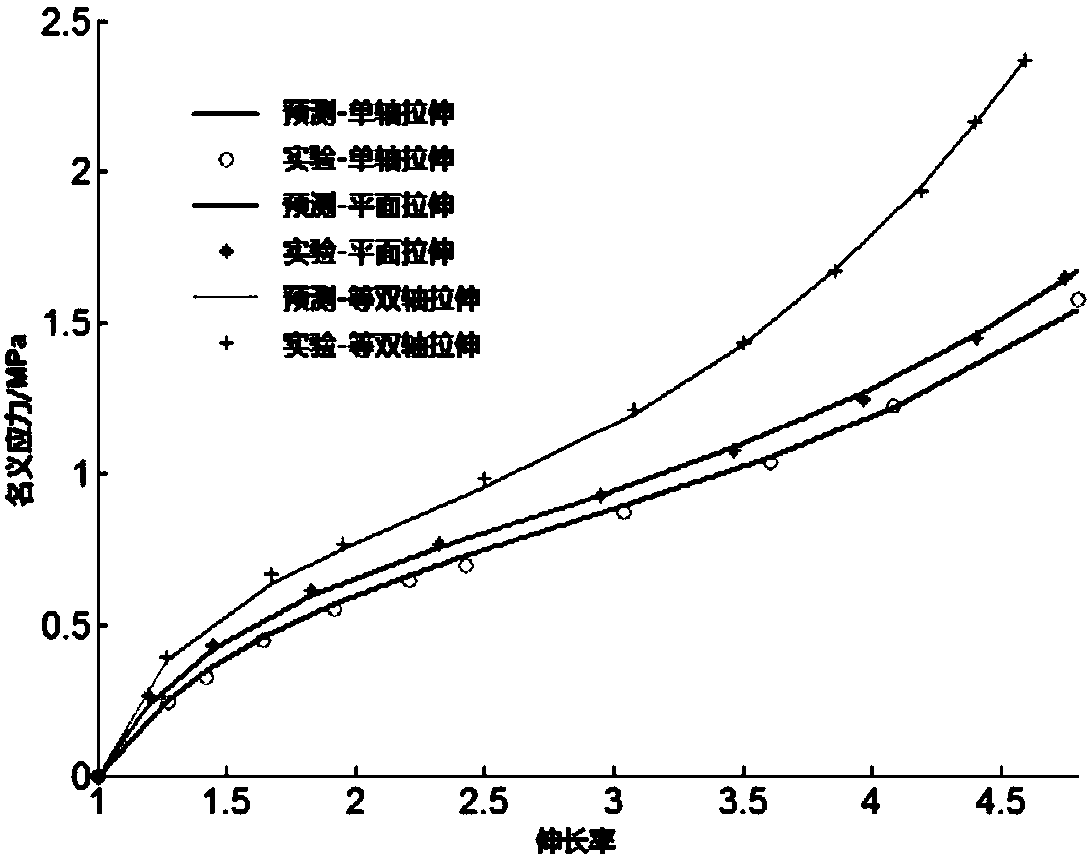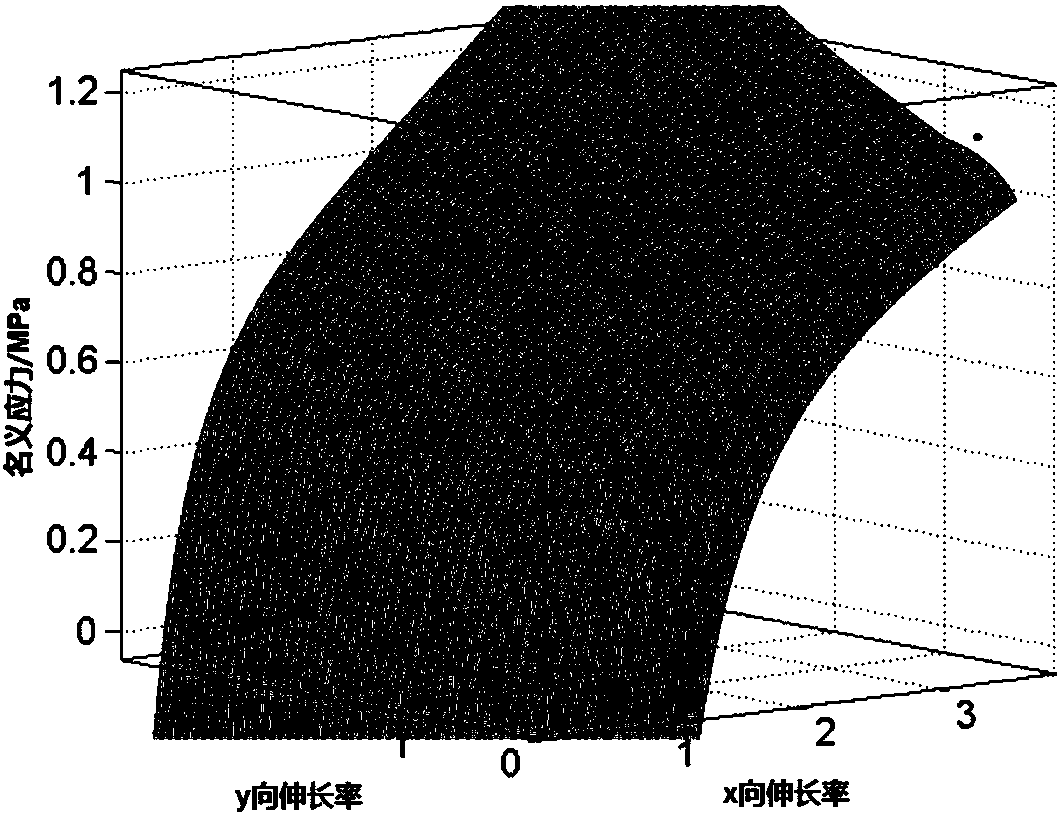Elastic constitutive model suitable for rubber materials, and application thereof
A constitutive model and elasticity technology, applied in the fields of engineering and scientific applications, can solve the problems of less parameters, inconvenient application, and many model parameters, and achieve the effect of good reliability and convenient engineering application.
- Summary
- Abstract
- Description
- Claims
- Application Information
AI Technical Summary
Problems solved by technology
Method used
Image
Examples
Embodiment 1
[0035] This embodiment proposes a relationship model between the stress-elongation function and the plane tensile stress-elongation function in any plane deformation state. Through this relationship model, the constitutive relationship of rubber-like incompressible hyperelastic materials can be directly established and identified Model parameters, specifically in the following form:
[0036]
[0037] In the formula, T i In any triaxial stress state (λ i ,λ j ,λ k ) under λ i Nominal stress in the direction (any direction of the two directions with larger elongation); λ i ,λ j is the main elongation of the two larger values among the three main elongations; T planar Expressed as a function of the nominal stress determined by planar tension experiments as a function of the sum of principal elongations in the same direction as the stress.
[0038] Equation (1) is the most general form of the constitutive model proposed in this example, which describes the constitutive...
Embodiment 2
[0054] The constitutive model of this embodiment is basically the same as that of Embodiment 1, and the specific process of using the constitutive model of this embodiment to identify parameters is as follows:
[0055] 1) Perform all three types of material experiments to obtain nominal stress-elongation curves during the experiment, such as image 3 The uniaxial tensile curves and planar tensile curves shown in ;
[0056] 2) Substituting into the model of formula (1) to directly fit all parameters;
[0057] 3) The complete constitutive model of the material is obtained from formula (1) and formula (2), especially it can be used as the hyperelastic model part of the visco-hyperelastic model.
Embodiment 3
[0059] In this embodiment, the models of formula (1), formula (2), formula (3) and formula (4) are embedded in analysis software such as finite element, or go in other material mechanical property analysis calculation software:
[0060] 2) based on the corresponding experimental data, fitting the parameters of the model;
[0061] 3) Use the models of formula (1), formula (2), formula (3) and formula (4) to construct the material constitutive relation similar to formula (1).
[0062] 4) Use this constitutive relation to carry out numerical simulation and stress analysis.
PUM
 Login to View More
Login to View More Abstract
Description
Claims
Application Information
 Login to View More
Login to View More - R&D Engineer
- R&D Manager
- IP Professional
- Industry Leading Data Capabilities
- Powerful AI technology
- Patent DNA Extraction
Browse by: Latest US Patents, China's latest patents, Technical Efficacy Thesaurus, Application Domain, Technology Topic, Popular Technical Reports.
© 2024 PatSnap. All rights reserved.Legal|Privacy policy|Modern Slavery Act Transparency Statement|Sitemap|About US| Contact US: help@patsnap.com










